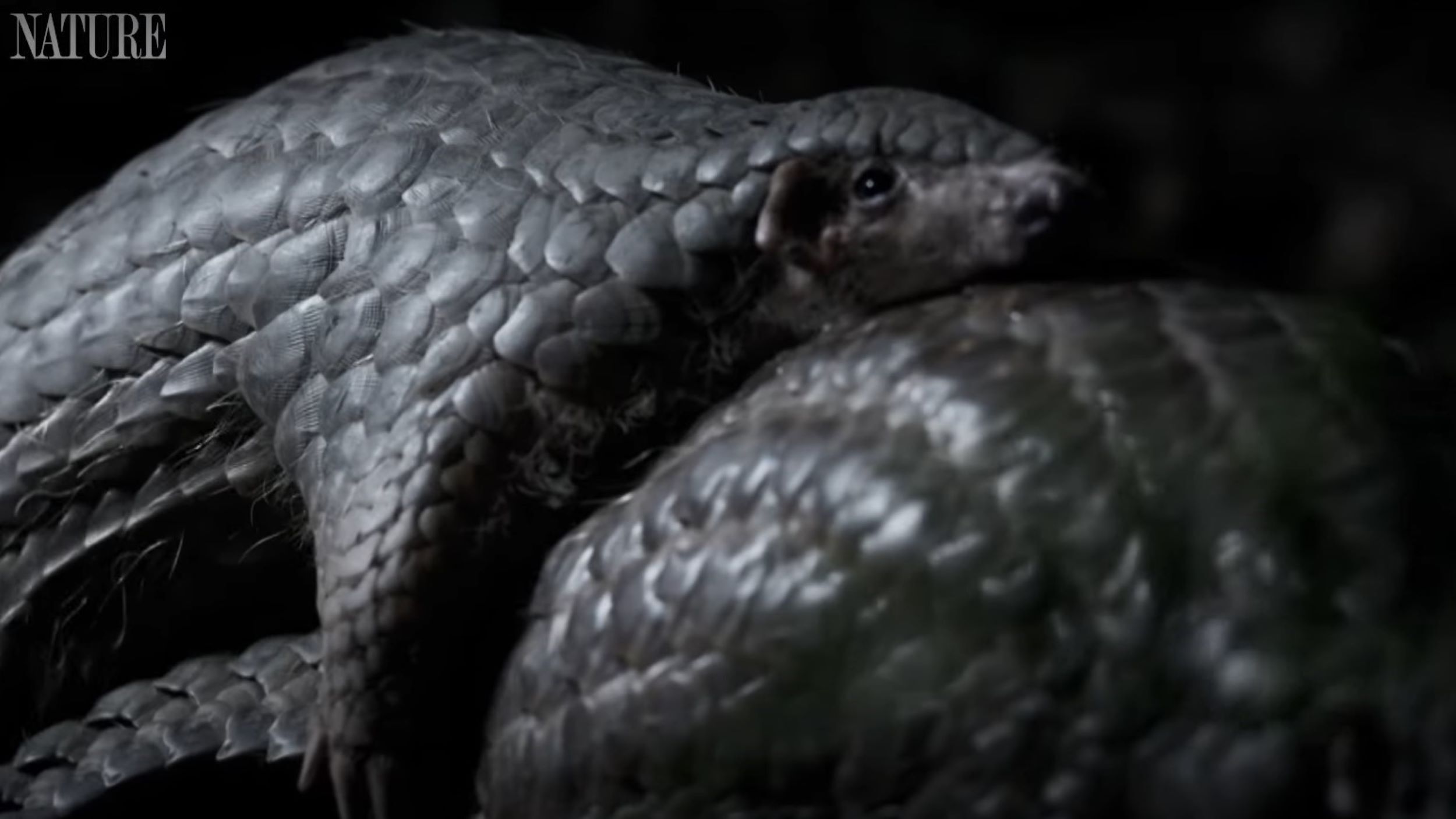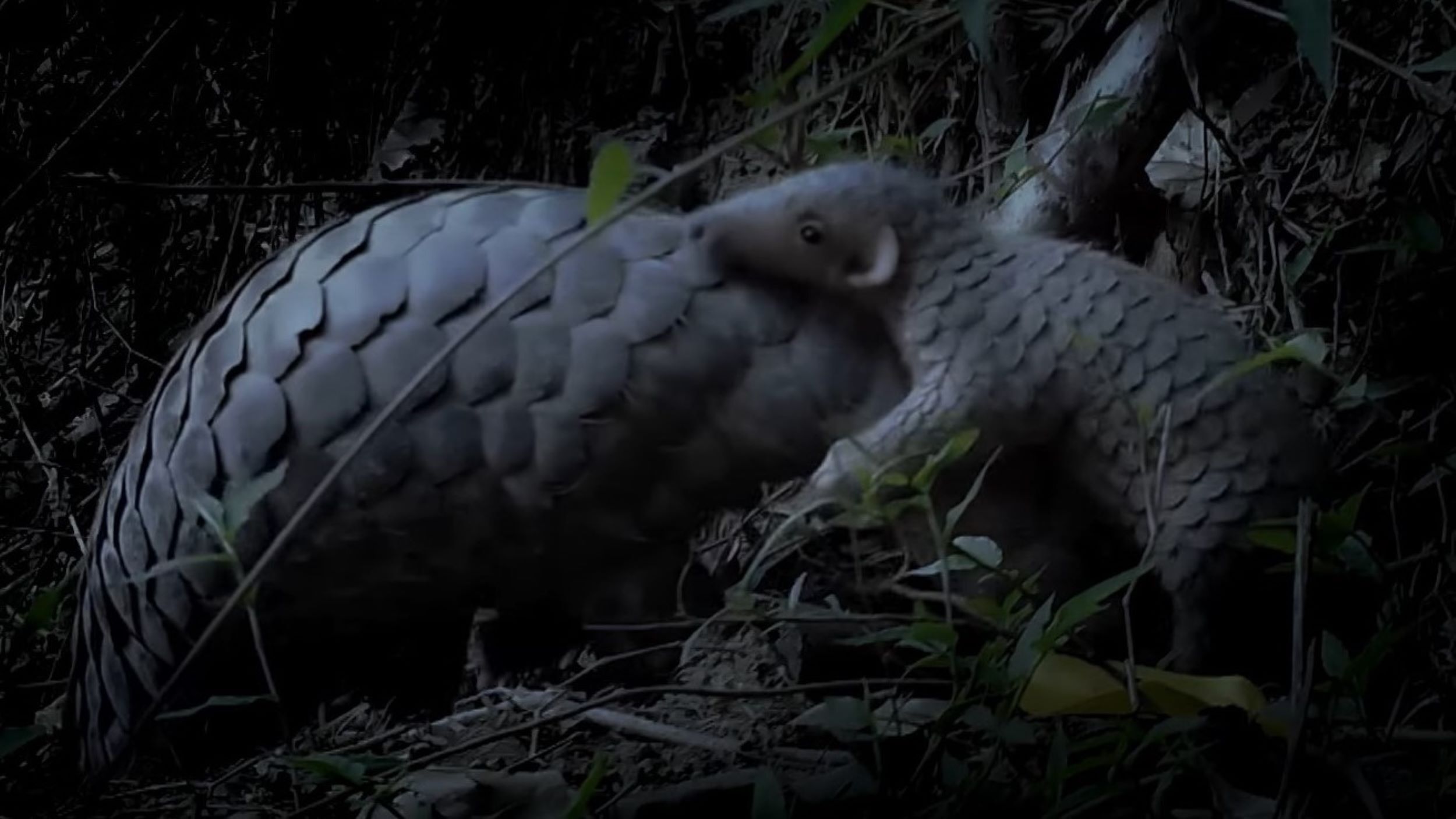Pangolin courtship ritual and birth of a 'pangopup' captured in incredible, rare footage
Pangolin courtship rituals can last hours and require lots of adjusting for the couple's scaly armor, incredible new footage shot for the PBS series "Big Little Journeys" reveals.
Rare footage has captured the slow nighttime courtship ritual of pangolins — which ultimately led to the birth of a "pangopup" filmed clinging to its mother's back.
For the new PBS series "Big Little Journeys," videographers followed a pair of Taiwanese pangolins (Manis pentadactyla pentadactyla) in a forest in Taiwan. In the clip, the female leads the male for hours through the night until she is ready to start mating. The pair are then seen entwined as they attempt to find a position that works around their armor — overlapping scales that are so tough predators struggle to bite into it.
"Pangolins are highly sensitive to sound and smell and so we had to be extremely patient and quiet when filming them in the wild," series producer Paul Williams told Live Science in an email. "Any sudden movement and a pangolin will take a defensive position and curl into a ball. They can stay that way for several hours relying solely on their scales for protection — it's one reason why they are so vulnerable to poachers."
There are eight species of Pangolin found across two continents — Africa and Asia. Three of these, the Sunda pangolin (Manis javnica) and Philippine pangolin (Mains culionensis) and the Chinese pangolin (Manis pentadactyla), are listed as critically endangered on the International Union for Conservation of Nature Red List of Threatened Species. The Taiwanese pangolin is a subspecies of the Chinese pangolin.
Related: Humans now kill 80 million sharks per year, 25 million of which are threatened species

Pangolins are among the world's most trafficked mammals. According to the World Wide Fund For Nature (WWF), an estimated 195,000 are killed every year for their scales, which are used in traditional medicine. In 2020, China upgraded the Chinese pangolin's protection status, putting it on the same protection level as the giant panda (Ailuropoda melanoleuca).
Taiwan is one of the few places where pangolin poaching is no longer a threat, thanks to strong legislation and protections. This provided the filmmakers with an "unprecedented opportunity" to film the pangolin pair over long periods, Williams said.
Sign up for the Live Science daily newsletter now
Get the world’s most fascinating discoveries delivered straight to your inbox.

The team spent hundreds of hours waiting and watching as the pangolins woke up and ventured from their burrows as dusk set in. They worked with Nick Ching-Min Sun, a zoologist at the National Pingtung University in Taiwan, who rescues and releases pangolins and uses GPS tags to monitor them. They used a network of camera traps to finally capture the pangolin courtship.
Seven months later, the female was filmed appearing from a burrow with her new pangopup clinging to the back of her long, scaly tail. "We were able to reveal new insights into Pangolin behavior including courtship, and interactions with their offspring," Williams said.

Hannah Osborne is the planet Earth and animals editor at Live Science. Prior to Live Science, she worked for several years at Newsweek as the science editor. Before this she was science editor at International Business Times U.K. Hannah holds a master's in journalism from Goldsmith's, University of London.











